
PMA Prozeß- und Maschinen-Automation GmbH
rail line
UNIFLEX CI 45, KS 45,
SG 45, TB 45
MODBUS
rail line
Interface description
english
9499-040-72011
Valid from: 12/2011

MODBUS®is a registered trademark of the MODBUS-IDA Organization
BluePort®and BlueControl®are registered trademarks of PMA Prozeß- und Maschinen-Automation GmbH
Explanation of symbols:
gGeneral information
aGeneral warning
lCaution: ESD-sensitive components
© 2011 PMA Prozeß- und Maschinen-Automation GmbH
Printed in Germany
All rights reserved. Without prior written consent, reprinting or photocopying
of this document, entirely or in part, is prohibited.
This is a publication of PMA Prozeß- und Maschinen Automation
P.O. Box 310229
D-34058 Kassel
Germany

Content
1. General ...........................................5
1.1 References........................................5
2. Commissioning the interface ...............................6
2.1 Installation........................................6
2.1.1 Plug-in screw terminals ............................7
2.2 Electrical connections ..................................8
2.2.1 Wiring (general) ................................9
2.2.2 Screening....................................9
2.2.3 Terminating resistors .............................10
2.2.4 Installation notes ...............................11
2.3 Bus settings ......................................11
2.3.1 Bus address ..................................11
2.3.2 Transmission parameters...........................11
2.4 System layout .....................................13
2.4.1 Minimum configuration of a MODBUS installation .............13
2.4.2 Maximum configuration of a MODBUS installation ...........13
2.4.3 Wiring inside buildings ............................14
3. Bus protocol .......................................15
3.1 Composition of a transmission byte ..........................15
3.2 General message frame ................................15
3.2.1 CRC ......................................16
3.2.2 End of frame detection ............................16
3.3 Transmission principles ................................16
3.4 Response delay (dELY) ................................16
3.5 Modem operation (C.dEL) ...............................16
3.6 Function codes .....................................17
3.6.1 Reading several values ............................17
3.6.2 Writing a single value ............................18
3.7 Writing several values .................................19
3.8 Error record.......................................20
3.8.1 Error codes ..................................20
3.9 Diagnosis........................................21
3.9.1 Return transmission of the received message (0x00) ............22
3.9.2 Restart of communication (terminates the Listen Only mode) (0x01) ....22
3.9.3 Return transmission of the diagnosis register (0x02) ............22
3.9.4 Change to the Listen Only mode (0x04) ...................22
3.9.5 Delete the counter and reset the diagnosis register (0x0A) .........22
3.9.6 Return transmission of the message counter (0x0B).............23
3.9.7 Return transmission of the counter for faulty messages (0x0C).......23
3.9.8 Return transm. of counter for messages answered with error code (0x0D). 23
3.9.9 Return transmission of the message counter for this slave (0x0E) .....23
3.9.10 Return transmission of the counter for unanswered messages (0x0F) . . . 23
3.9.11 Return transmission of counter for messages answered with NAK (0x10) .23

3.9.12 Return transmission of counter for messages answered with Busy (0x11) .24
3.9.13 Return transmission of the parity error counter (0x40) ...........24
3.9.14 Return transmission of the framing error counter (0x41) ..........24
3.9.15 Return transmission of the counter for too long messages (0x12) .....24
4. MODBUS addresses, address areas, and address formats .............25
4.1 Area definitions ....................................25
4.2 Special values .....................................25
4.3 Composition of the address tables ..........................26
4.4 Internal data types ...................................26
5. Index ...........................................27
6. Address tables .......................................29

.1General
We thank you for purchasing a device from the rail line product range. This document describes the implementation
and operation of the MODBUS interface used in the different versions of rail line equipment (CI 45-1xx-1.., KS
45-1xx-1..., TB 45-1xx-1....), which will be called ‘device’ in the rest of this document.
Devices with a MODBUS interface permit the transmission of process data, parameters, and configuration data.
Electrical connections are made at the base of the device in the channel of the top-hat DIN rail. The serial
communication interface provides a simple link to superordinate PLCs, visualization tools, etc.
An additional interface that is always fitted in the device’s front panel is the BluePort®(PC) interface. This interface is
not bussable, and serves for a direct connection with the BlueControl®software package that runs on a PC or laptop.
Communication is done according to the master/slave principle. The device is always operated as a slave.
The most important characteristics and physical/electrical properties of the bus connection are:
•Network topology
linear bus, possible with bus termination at both ends (see below).
•Transmission media
screened and twisted 2-wire copper leads
•Lead lengths (without repeater)
A maximum lead length of 1000 m should not be exceeded.
•Transmission speeds
The following transmission speeds are supported:
2400 … 38400 bits/s
•Physical interface
RS 485 with bus connections in the top-hat rail; connections made on site.
•Address range
1 ... 247
(32 devices in one segment. Expandable to 247 with repeaters.)
1.1 References
Further information on the MODBUS-Protokoll:
[1] MODBUS Specifications
–MODBUS application Protocol Specification V1,1
–MODBUS over serial line specification and implementation guide V1.1
–http://www.modbus.org
Further information on RS 485:
[2] ANSI/TIA/EIA-485-A
Additional documentation for rail line devices:
[3] Universal transmitter UNIFLEX CI 45
–Data sheet CI 45 9498 737 48313
–Operating notes CI 45 9499 040 71441
–Operating instructions CI 45 9499 040 71711
[4] Universal controller KS 45
–Data sheet KS 45 9498 737 48513
–Operating notes KS 45 9499 040 71541
–Operating instructions KS 45 9499 040 71811
[5] Temperature limiter TB 45
–Data sheet KS 45 9498 737 48413
–Operating notes KS 45 9499 040 71541
–Operating instructions KS 45 9499 040 71911
General
rail line References 5

.2Commissioning the interface
The field bus connections to the devices are made by means of bus connectors, which are clipped into the channel of
the top-hat rail. If several devices are to be connected to the bus, they can be mounted side by side on the rail,
whereby the bus links between the devices are made directly via the bus connectors.
2.1 Installation
The devices are intended for vertical mounting on 35 mm top-hat rails to EN 50 022.
The place of installation should be free from vibrations, aggressive media (e.g. acids, leaches), liquids, dust or other
suspended particle.
Devices of the rail line family can be mounted directly side by side (close packed). To ensure easy
mounting/dismounting, there should be a clearance of at least 8 cm above and below the devices.
Proceed as follows to install the bus connectors:
1Clip the bus connector into the top-hat rail.
2If several devices are to be mounted side by side, the bus connectors must be pushed together
to provide the connections.
3Clip the devices onto the top-hat rail above their respective bus connectors
– the bus connection is finished!
4Connection of the external bus leads is done by means of plug-in screw terminals
- e.g. left-sided via inverted terminals with horizontal cable exit (9407 998 07131)
- e.g. right-sided via terminals with vertical cable exit (9407 998 07141).
For dismounting, the above steps are carried out in reverse order.
grail line devices do not contain any serviceable parts, and therefore need not be opened by the customer.
a- The device may only be used in environments with the specified protection class.
- The ventilation slots in the housing must be kept free.
- In plants where transient voltage spikes can occur, the devices should be protected by means of suitable
overvoltage or surge arresters!
lCaution! The device contains ESD-sensitive components.
aPlease observe the safety instructions.
Commissioning the interface
6 Installation rail line
top
1
top
2 3
top
4
Fig. 1 Installation steps

2.1.1 Plug-in screw terminals
The external bus leads are connected to the bus connectors by means of plug-in screw terminals, which can be
plugged into the bus connectors from the left or right side of the devices. Removal of the screw terminals is done with
the help of a screwdriver used as a lever.
Two types of bus connector are available, depending on the side from which the connections are made (left or right) or
the direction of cable entry (see Fig. 4):
1Bus connector for left-hand connection with horizontal cable entry, Order no. 9407 998 07131
2Bus connector for right-hand connection with vertical cable entry, Order no. 9407 998 07141
The connectors are fitted with screw terminals with standard 3,81 mm spacing for lead cross sections up to 1,5 mm 2,
and should be tightened with a torque of 0,22 - 0,25 Nm.
Additional bus connector types are available from the MINI COMBICON range of Phoenix Contact.
Commissioning the interface
rail line Installation 7
1
2
Fig. 2 Bus connectors

2.2 Electrical connections
The bus is build as RS 485 - two-wire cable with common ground main.
All the participants of an RS 485 bus are connected in parallel to the signals ‘Data A’ and ‘Data B’.
The meaning of the data line terms are defined in the unit as follows:
•for signal 1 (off) Data A is positive to Data B
•for signal 0 (on) Data A is negative to Data B
gThe terms Data A and Data B are reverse to A und B defined in [2] .
For the purpose of limiting ground current loops, signal ground (GND) can be grounded at one point via a resistor
‘RGND’ (100 ohms, ¼ watt).
Association of terms for the two-wire-MODBUS definition according to [1]:
Definition MODBUS according to unit
D1 Data A
D0 Data B
Common RGND
There are various possibilities for cable entry of the RS 485, as shown below.
1horizontal cable entry
2vertical cable entry
3cable entry at both sides
Commissioning the interface
8 Electrical connections rail line
Data A
Data A
Data B
Data B
RGND
RGND
RS 485
top
Fig. 3 Connector pin assignment
Data A
Data B
RGND
123
Data A
Data B
RGND
Data A
Data B
RGND
Data A
Data B
RGND
Fig. 4 Wiring options

+Wiring example
Notes:
1Terminating resistors between Data A and B at the cable ends (see 2.2.3 below)
2Screening (see 2.2.2 below)
3GND lead (see Fig. 6)
2.2.1 Wiring (general)
•Depending on each application, suitable cables are to be used for the bus. When installing the cables , all
relevant regulations and safety codes (e.g. VDE 0100) must be observed:
•Cable runs inside buildings (inside and outside of control cabinets)
•Cable runs outside buildings
•Potential balancing conductors
•Screening of cables
•Measures against electrical interference
•Length of spur lines
In particular, the following points must be considered:
•The RS 485 bus technology used here permits up to 32 devices in a segment to be connected to one bus cable.
Several segments can be coupled by means of repeaters.
•The bus topology is to be designed as a line with up to 1000 m length per segment. Extensions by means of
repeaters are permitted.
•The bus cable is to be taken from device to device (daisy chaining), i.e. not star connected.
•If possible, spur lines should be avoided, in order to prevent reflections and the associated disturbances in
communication.
•The general notes on interference-free wiring of signal and bus leads are to be observed (see Operating notes
“EMC – General information’ (9407 047 09111)).
•To increase signal transmission reliability, we recommend using screened, twisted pairs for the bus leads.
2.2.2 Screening
The type of screening is determined primarily by the nature of the expected interference.
•For the suppression of electrical fields, one end of the screened cable must be grounded. This should always be
done as the first measure.
•Interference due to alternating magnetic fields can only be suppressed, if the screened cable is grounded at both
ends. However, this can lead to ground current earth loops: galvanic disturbance along the reference potential
lead can interfere with the useful signal, and the screening effect is reduced.
•If several devices are linked to a single bus, the screen must be connected at each device, e.g. by means of
screen clamps.
•The bus screen must be connected to a central PE point, using short, low-impedance connections with a large
surface, e.g. by means of screen clamps.
Commissioning the interface
rail line Electrical connections 9
Master z.B. / e.g.
Converter RS 232-RS 485
(ADAM-4520-D)
DATA+ 1
DATA-
TX+
TX-
RX+
RX-
(R)+Vs
(B)GND 10
Data A
Data A
Data B
Data B
RGND
(RS-485) (RS-422)
LT 1
LT 1
2
3
Fig. 1 connection example

2.2.3 Terminating resistors
The widespread US Standard EIA RS 485 recommends fitting terminating resistors at each end of the bus cable.
Terminating resistors usually have a value of approx. 120 ohms, and are connected in parallel between the data lines A
and B (depending on the cable impedance; for details, see the cable manufacturer’s data sheet). Their purpose is to
eliminate reflections at the end of the leads, thus obtaining a good transmission quality. Termination becomes more
important, the higher the transmission speed is, and the longer the bus leads are.
However, if no signals are applied to the bus, it must be ensured that the signal levels are clearly defined. This done by
means of pull-up and pull-down resistors between +5V or GND, and the drivers. Together with the bus terminating
resistor, this forms a voltage divider. Moreover, it must be ensured that there is a voltage difference of at least
±200mV between the data lines A and B, as seen by the receiver.
gNormally, an external voltage source is provided.
Fig. 6 shows the device connections as recommended by the MODBUS User Organization [1].
+If no external voltage source is available, and if there are only a few participants on the bus (e.g. only a
master and a slave device), and the transmission speed is low (e.g. £9600 bits/s), the lead lengths are
short, and terminating resistors have been fitted, it is possible that the minimum signal level cannot be
reached. This will cause disturbances in signal transmission.
gTherefore, if only a few PMA devices are connected, we recommend the following procedure before
fitting terminating resistors:
Baudrate Lead length No. of PMA devices Terminating resistor
£9600 Bit/s £1000 m < 8 no
19200 Bit/s £500 m < 8 no
38400 Bit/s £250 m < 8 no
any ³8 useful
other cases: try out
gIf less than 8 PMA devices are connected to a bus with the above maximum lead lengths, no terminating
resistors should be fitted.
+Note: If additional devices from other manufacturers are connected to the bus, no general
recommendations are possible – this means: trial and error!
Commissioning the interface
10 Electrical connections rail line
5V
Pull Up
Pull Down
Master
Slave Slave Slave
Commom
D0
D1
LT
LT
Fig. 6 Recommended connections

2.2.4 Installation notes
•Measurement and data leads should be kept separate from control leads and power cables.
•Twisted and screened cables should be used to connect sensor. The screen must be grounded.
•Connected contactors, relays, motors, etc. should be fitted with RC snubber circuits in accordance with
manufacturer specifications.
•The device must not be installed near powerful electrical or electromagnetic fields.
a- The device is not certified for installation in explosion-hazarded areas.
- Incorrect electrical connections can result in severe damage to the device.
- Please observe all safety instructions.
2.3 Bus settings
2.3.1 Bus address
The participant address of a device connected to a bus must be adjusted by one of the following means:
•the Engineering Tool BlueControl® using the menu item Othr/Addr
•or via the device’s front panel (see below)
gEvery device connected to a bus must have a different, unique address.
aPlease regard: When allocating the unit's addresses don't give the same address to two units. In this case
a strange behaviour of the whole bus becomes possible and the busmaster will not be able to
communicate with the connected slave-units.
2.3.2 Transmission parameters
gThe transmission parameters of all devices linked to a bus must have the same settings.
Baudrate (bAud)
The baudrate is the measure of data transmission speed. The devices support the following transmission speeds:
•38000 bits/s
•19200 bits/s
•9600 bits/s
•4800 bits/s
•2400 bits/s
Commissioning the interface
rail line Bus settings 11
…
450.3
ûC
äüüü
3s
ô
450.3
PARA
äüüü
450.3
CONF
äüüü
ô
450.3
othr
äüüü
450.3
bAud
äüüü
450.3
Addr
äüüü
ô
ô
Fig. 7 Setting a bus address

Parity / Stop bit (PrtY)
The parity bit is used to check whether an individual fault has occurred within a byte during transmission.
The device supports:
•even parity
•odd parity
•no parity
With even parity, the parity bit is adjusted so that the sum of the set bits in the 8 data bits and the parity bit result in
an even number. Conversely, the same applies for uneven parity.
gIf a parity error is detected upon receipt of a message, the receiving device will not generate an answer.
Other parameters are:
•8 data bits
•1 start bit
•1 stop bit
1 or 2 stop bits can be selected when adjusting ‘no parity’.
gThe max. length of a message may not exceed 64 bytes.
Commissioning the interface
12 Bus settings rail line

2.4 System layout
gPlease observe the guidelines and notes provided by the manufacturer of the master device regarding the
layout of a communication system.
2.4.1 Minimum configuration of a MODBUS installation
A MODBUS installation consists of not less than the following components:
•a bus master, which controls the data traffic
•one or more slave participants, which provide data upon demand by the master
•the transmission media, consisting of the bus cable and bus connectors to link the individual participants, plus a
bus segment (or several, which are connected by means of repeaters).
2.4.2 Maximum configuration of a MODBUS installation
A bus segment consists of max. 32 field units (active and passive). The greatest number of slave participants that can
be operated by one MODBUS master via several segments, is determined by the internal memory structure of the
master. Therefore, you should know the specifications of the master when planning a MODBUS installation.
The bus cable can be opened at any point in order to add another participant by means of a bus connector. At the end
of a segment, the bus cable can be extended up to the total permissible length for a segment. The permissible length
of a bus segment depends on the selected transmission speed, which in turn is determined mainly by plant layout
(length of each segment, distributed inputs/outputs) and the required scan cycles for individual participants. All
participants connected to the bus must be configured for the same transmission speed (bit rate).
+MODBUS devices must be connected in a line structure.
If more than 32 participants are required, or larger distances than the permissible length of one segment are needed,
the MODBUS installation can be extended by means of repeaters.
A fully configured MODBUS installation may contain max. 247 participants with the address range 1...247. Every
installed repeater reduces the max. number of participants with a segment. Repeaters are passive participants and do
not require a MODBUS address. However, its input circuit represents an additional load in the segment due to the
current consumption of the bus driver. Nonetheless, a repeater has no influence on the total number of participants
connected to the bus. The maximum number of series-connected repeaters can differ, depending on the manufacturer.
Therefore, you should ask the manufacturer about possible limitations when planning a MODBUS installation.
rail line System layout 13
S
SS
SS
S
S
M
R
R
R
R
S
Slave ohne Abschlußwiderstand
Segment 1
Segment 2
Segment 3
Slave mit Abschlußwiderstand
Repeater mit Abschlußwiderstand
Repeater ohne Abschlußwiderstand
Fig. 8 MODBUS line structure

2.4.3 Wiring inside buildings
The following wiring hints apply for twisted-pair cables with screen. The cable screen serves to improve overall
electromagnetic compatibility.
Depending on requirements, the one or both ends of the cable screen must
be connected to a central earth point (PE) by means of low-impedance
connections with a large surface, e.g. screen clamps. When installing a
repeater or field unit in a control cabinet, the cable screen should be
connected to an earth rail mounted as close as possible to the cable entry
into the cabinet.
The screen must be taken right up to the field unit, where it is to be
connected to the conductive housing and/or the metal connector. Hereby, it
must be ensured that the device housing (and possibly the control cabinet
in which the device is installed), are held at equal ground potential by means of low-impedance connections with a
large surface. Connecting a screen to a lacquered or painted surface is useless.
By observing these measures, high-frequency interference will be grounded reliably via the cable screens. Should
external interference voltages still reach the data lines, the voltage potential will be raised symmetrically on both
lines, so that in general, no destructive voltage differences can arise. Normally, a shift of the ground potential by
several volts will not have an effect on reliable data transmission. If higher voltages are to be expected, a potential
balancing conductor with a minimum cross-section of 10 mm2should be installed parallel to the bus cable, with
connections to the reference ground of every field unit. In case of extreme interference, the bus cable can be installed
in a metal conduit or channel. The conduit tube or the channel must be earthed at regular distances.
The bus cable must always be installed with a minimum separation of 20 cm from other cables carrying voltages above
60 V. Similarly, the bus cable must be run separately from telephone lines, as well as from cables leading into
explosion-hazarded areas. In these cases, we recommend installing the bus cable in a separate cable tray or channel.
Cable trays or channels should always be made of conductive materials, and must be earthed at regular distances. Bus
cables should not be subjected to any mechanical strains or obvious risks of damage. If this cannot be ensured,
suitable measures must be undertaken, such as installation in conduit.
Floating installation
If the installation must be floating (no earth connection) for certain reasons, the device reference ground must only
have a high-impedance connection to earth (e.g. an RC combination). The system will then find its own earth potential.
When connecting repeaters for the purpose of linking two bus segments, a floating installation is recommended, to
prevent possible potential differences being transferred from one segment to the next.
14 System layout rail line
Functional ground Cable screen
Earth rail in cabinet
near cable entry
Fig. 9 Screen connection

.3Bus protocol
3.1 Composition of a transmission byte
Originally, the MODBUS protocol was defined for the communication between a supervisory system and the
ModiconÒPLC. It used a master/slave structure, in which only one device (master) is able to initiate data transactions
(queries). The query message from the master is answered (response) by other devices (slaves), which supply the
requested data.
Moreover, the master can address a specific slave via its MODBUS address, or address all connected slaves by means
of a general message (broadcast).
The MODBUS protocol determines the transmission formats for the query and the response. Function codes define the
actions to be executed by the slaves.
Within the device, the MODBUS protocol uses the RTU (remote terminal unit) mode, i.e. every transmitted byte of a
message contains two hexadecimal characters (0...9, A...F).
The composition of a byte in the RTU-protocol is as follows:
Start bit 8 data bits Parity/Stop bit Stop bit
3.2 General message frame
The message is read into a data buffer with a defined maximum length. Longer messages are not accepted, i.e. the
device does not answer.
The message consist of the following elements:
Device address Function code Data field CRC End of frame detection
1 byte 1 byte N * 1 bytes 2 bytes
•Device address (Addr)
The device address is used for identification. Device addresses can be assigned in the range of 1...127.
The device address ‘0’ is reserved for ‘Broadcast’ messages to all slaves. A broadcast message can be
transmitted e.g. with a write instruction that is then executed by all the slaves on the bus. Because all the slaves
execute the instruction, no response messages are generated.
•Function code
The function code defines the transaction type in a message. The MODBUS specification defines more than 17
different function codes. Supported codes are described in Section 3.6. „Function codes“.
•Data field
The data field contains the detailed specifications of the transaction defined by the function code. The length of
the data field depends on the function code.
•CRC
As a further means of fault detection (in addition to parity bit detection) a 16-bit cyclical redundancy check (CRC)
is performed. The CRC code ensures that communication errors are detected. For additional information, see
Section 3.2.1. ”CRC”.
•End of frame detection
The end of a message is defined by a period of 3,5 characters, during which no data transfer occurs. For
additional information, see Section 3.2.2. „End of frame detection“
Further information is given in the documents named in [1] or under http://www.modbus.org.
Bus protocol
rail line Composition of a transmission byte 15

3.2.1 CRC
The CRC is a 16-bit value that is attached to the message. It serves to determine whether a transmitted message has
been received without errors. Together with the parity check, this should detect all possible communication errors.
gIf a parity fault is detected during reading, no response message will be generated.
The algorithm for generating a CRC is as follows:
Load CRC register with FFFFhex.
Exclusive OR the first transmit/receive byte with the low-order byte of the CRC register,
putting the result into the CRC register, zero-filling the MSB.
Shift the CRC register one bit to the right.
If the expelled bit is a '0' repeat step 3.
If the expelled bit is a ‘1’, exclusive OR the CRC register with value A001hex.
Repeat steps 3 and 4 for the other 7 data bits.
Repeat steps 2 to 5 for all further transmit/receive bytes.
Attach the result of the CRC register to the message (low-order byte first, then the high-order byte).
When checking a received message, the CRC register will return ‘0’, when the message including the CRC is
processed.
3.2.2 End of frame detection
The end of a message (frame) is defined as a silence period of 3.5 characters on the MODBUS.
A slave may not start its response, and a master may not start a new transmission before this time has elapsed.
However, the evaluation of a message may begin, if a silence period of more than 1.5 characters occurs on the
MODBUS. But the response may not start before 3,5 characters of silence.
3.3 Transmission principles
Two transmission modes are used with MODBUS:
•Unicast mode
•Broadcast mode
In the Unicast mode, the master addresses an individual device, which processes the received message and generates
a response. The device address can be 1...247. Messages always consist of a query (request) and an answer
(response). If no response is read within a defined time, a timeout error is generated.
In the Broadcast mode, the master sends a write instruction (request) to all participants on the bus, but no responses
are generated. The address ‘0’ is reserved for broadcast messages.
3.4 Response delay (dELY)
Some devices require a certain period to switch from transmit to receive. The adjusted delay is added to the silent
period of 3,5 characters at the end of a message, before a response is generated. The delay is set in ms.
3.5 Modem operation (C.dEL)
The end of frame detection of a received MODBUS message can be increased by the period ‘C.del’. This time is
needed e.g. for transmission via a modem, if messages cannot be transmitted continuously (synchronous operation).
The delay is set in ms.
Bus protocol
16 Transmission principles rail line

3.6 Function codes
Function codes serve to execute instructions. The device supports the following function codes:
Function code Description Explanation
hex dez
0x03 3 Read Holding (Output) Register Reading of process data, parameters, and configuration data
0x04 4 Read Input Register Reading of process data, parameters, and configuration data
0x06 6 Preset Single Register (Output) Wordwise writing of a value (process value, parameter, or
configuration data)
0x08 8 Diagnostics Reading the MODBUS diagnostic register
0x10 16 Preset Multiple Register (Output) Wordwise writing of several values (process data, parameter or
configuration data)
The behaviour of function codes 3 and 4 is identical.
The following sections show various examples of message composition.
3.6.1 Reading several values
Messages with function codes 3 or 4 are used for (wordwise) reading of process data, parameters or configuration
data. For reading ‘Float’ type data, 2 values must be requested for each datum.
The composition of a read message is as follows:
Request:
Field name Value (hex) Explanation
Address 11 Address 17
Function 03 or 04 Reading process data, parameters or configuration data
Start address High
Start address Low
02
8A
Starting address 650
No. of values 00
02
2 datums (2 words)
CRC CRC-Byte1
CRC-Byte2
Response:
Field name Value (hex) Explanation
Address 11 Address 17
Function 03 oder 04 Reading process data, parameters or configuration data
No. of bytes 04 4 data bytes are transmitted
Word 1 00
DE
Process data, parameters or configuration data.
Address 650= 222
Word 2 01
4D
Process data, parameters or configuration data.
Address 651= 333
CRC CRC-byte1
CRC-byte2
gA broadcast message is not possible for function codes 3 and 4.
gIf the first addressed value is not defined, an error message ”ILLEGAL DATA ADDRESS” is generated.
If no further data are defined in the areas to be read following the first value, these areas will be entered
with the value ”NOT DEFINED VALUE”. This enables areas with gaps to be to be read in a message.
Bus protocol
rail line Function codes 17

3.6.2 Writing a single value
Messages with function code 6 are used for (wordwise) writing of process data, parameters or configuration data as
integers. This function is not suitable for writing ‘Float’ type data.
The composition of a write message is as follows:
Request:
Field name Value (hex) Explanation
Address 11 Address 17
Function 06 Writing a single value (process data, parameter or configuration)
Write address High
Write address Low
02
8A
Write address 650
Value 00
7B
Preset value = 123
CRC CRC-byte1
CRC-byte2
Response:
Field name Value (hex) Explanation
Address 11 Address 17
Function 06 Writing a single datum (process data, parameter or configuration)
Write address High
Write address Low
02
8A
Write address 650
Value 00
7B
Preset value = 123
CRC CRC-Byte1
CRC-Byte2
If everything is correct, the response message corresponds exactly to the default.
gThe devices can also receive this message as a broadcast with the address ‘0’.
gA default value in the ‘Real’ data format is not possible, as only 2 bytes can be transmitted as value.
gIf a value is outside the adjustable range, the error message ”ILLEGAL DATA VALUE” is generated. The
datum remains unchanged. Also if the datum cannot be written (e.g. configuration data, and the device is
online), an error message ”ILLEGAL DATA VALUE” is generated.
Bus protocol
18 Function codes rail line

3.7 Writing several values
Messages with function code 16 are used for (wordwise) writing of process data, parameters or configuration data. For
writing ‘Float’ type data, 2 values must be transmitted for each datum.
The composition of a write message is as follows:
Request:
Field name Value (hex) Explanation
Address 11 Address 17
Function 10 Writing several process values, parameters or configuration data
Start address High
Start address Low
02
8A
Write address 650
No. of values 00
02
2 values
No. of bytes 04 4 data bytes are transmitted
Word 1 00
DE
Process value, parameters or configuration data.
Address 650 = 222
Word 2 01
4D
Process value, parameters or configuration data.
Address 651 = 333
CRC CRC byte1
CRC byte2
Response:
Field name Value (hex) Explanation
Address 11 Address 17
Function 10 Writing several process values, parameters or configuration data
Start address High
Start address Low
02
8A
Write address 650
No. of values 00
02
2 process values, parameters or configuration data
CRC CRC byte1
CRC byte2
gThe devices can also receive this message as a broadcast with the address ‘0’.
gIf the first value is not defined, an error message ”ILLEGAL DATA ADDRESS” is generated.
If the first value cannot be written (e.g. configuration data, and the device is online), an error message
”ILLEGAL DATA VALUE” is generated.
If no further data are defined or cannot be written in the specified areas following the first value, these areas will be
skipped. The data in these locations remains unchanged. This enables areas with gaps, or that are currently not
writable, to be changed with a message. No error message is generated.
If a value is outside the adjustable range, the error message ”ILLEGAL DATA VALUE” is generated. Subsequent data
are not evaluated. Previously accepted correct data are active.
Bus protocol
rail line Writing several values 19

3.8 Error record
An error record is generated, if a message is received correctly, but message interpretation or the modification of a
datum is not possible.
gIf a transmission error is detected, no response is generated. The master must retransmit the message.
Detected transmission errors are:
•Parity fault
•Framing error (no stop bit received)
•Overrun error (receiving buffer has overflowed or data could not be retrieved quickly enough from the UART)
•CRC error
The composition of the error record is as follows:
Field name Value Explanation
Address 11 Address 17
Function 90 Error record for the message ‘Writing several parameters or configuration data’.
Composition: 80hex + function code
Error code 02 ILLEGAL DATA ADDRESS
CRC CRC byte1
CRC byte2
In the ‘Function’ field, the most significant bit is set.
The error code is transmitted in the subsequent byte.
3.8.1 Error codes
The following error codes are defined:
Code Name Explanation
01 ILLEGAL FUNCTION The received function code is not defined in the device.
02 ILLEGAL DATA ADDRESS The received address is not defined in the device, or the value may not be
written (read only).
If several data are read simultaneously (function codes 01, 03, 04) or
written simultaneously (function codes 0F, 10), this error is only generated
if the first datum is not defined.
03 ILLEGAL DATA VALUE The received value is outside the adjusted limits or it cannot be written at
present (device is not in the configuration mode).
If several data are written simultaneously (function codes 0F, 10), this
error is only generated if the first datum cannot be written.
04 SLAVE DEVICE FAILURE More values are requested than permitted by the transmission buffer.
Other error codes specified in the MODBUS protocol are not supported.
Bus protocol
20 Error record rail line
Page is loading ...
Page is loading ...
Page is loading ...
Page is loading ...
Page is loading ...
Page is loading ...
Page is loading ...
Page is loading ...
Page is loading ...
Page is loading ...
Page is loading ...
Page is loading ...
Page is loading ...
Page is loading ...
Page is loading ...
Page is loading ...
Page is loading ...
Page is loading ...
Page is loading ...
Page is loading ...
Page is loading ...
Page is loading ...
Page is loading ...
Page is loading ...
Page is loading ...
Page is loading ...
Page is loading ...
Page is loading ...
Page is loading ...
Page is loading ...
Page is loading ...
Page is loading ...
Page is loading ...
Page is loading ...
Page is loading ...
Page is loading ...
Page is loading ...
Page is loading ...
Page is loading ...
Page is loading ...
Page is loading ...
Page is loading ...
Page is loading ...
Page is loading ...
Page is loading ...
Page is loading ...
Page is loading ...
Page is loading ...
Page is loading ...
Page is loading ...
Page is loading ...
Page is loading ...
Page is loading ...
Page is loading ...
Page is loading ...
Page is loading ...
Page is loading ...
Page is loading ...
Page is loading ...
Page is loading ...
Page is loading ...
Page is loading ...
Page is loading ...
Page is loading ...
Page is loading ...
Page is loading ...
Page is loading ...
Page is loading ...
Page is loading ...
Page is loading ...
Page is loading ...
Page is loading ...
Page is loading ...
Page is loading ...
Page is loading ...
Page is loading ...
Page is loading ...
Page is loading ...
Page is loading ...
Page is loading ...
Page is loading ...
Page is loading ...
Page is loading ...
Page is loading ...
Page is loading ...
Page is loading ...
Page is loading ...
Page is loading ...
Page is loading ...
Page is loading ...
Page is loading ...
Page is loading ...
Page is loading ...
Page is loading ...
Page is loading ...
Page is loading ...
Page is loading ...
Page is loading ...
Page is loading ...
Page is loading ...
Page is loading ...
Page is loading ...
Page is loading ...
Page is loading ...
Page is loading ...
Page is loading ...
Page is loading ...
Page is loading ...
Page is loading ...
Page is loading ...
Page is loading ...
Page is loading ...
Page is loading ...
Page is loading ...
Page is loading ...
Page is loading ...
Page is loading ...
Page is loading ...
Page is loading ...
Page is loading ...
Page is loading ...
Page is loading ...
Page is loading ...
Page is loading ...
Page is loading ...
Page is loading ...
Page is loading ...
Page is loading ...
Page is loading ...
Page is loading ...
Page is loading ...
Page is loading ...
Page is loading ...
Page is loading ...
Page is loading ...
Page is loading ...
Page is loading ...
Page is loading ...
Page is loading ...
Page is loading ...
Page is loading ...
Page is loading ...
Page is loading ...
Page is loading ...
Page is loading ...
Page is loading ...
Page is loading ...
Page is loading ...
Page is loading ...
Page is loading ...
Page is loading ...
Page is loading ...
Page is loading ...
Page is loading ...
Page is loading ...
Page is loading ...
Page is loading ...
Page is loading ...
Page is loading ...
Page is loading ...
Page is loading ...
Page is loading ...
Page is loading ...
Page is loading ...
Page is loading ...
Page is loading ...
Page is loading ...
Page is loading ...
Page is loading ...
Page is loading ...
Page is loading ...
Page is loading ...
Page is loading ...
Page is loading ...
-
 1
1
-
 2
2
-
 3
3
-
 4
4
-
 5
5
-
 6
6
-
 7
7
-
 8
8
-
 9
9
-
 10
10
-
 11
11
-
 12
12
-
 13
13
-
 14
14
-
 15
15
-
 16
16
-
 17
17
-
 18
18
-
 19
19
-
 20
20
-
 21
21
-
 22
22
-
 23
23
-
 24
24
-
 25
25
-
 26
26
-
 27
27
-
 28
28
-
 29
29
-
 30
30
-
 31
31
-
 32
32
-
 33
33
-
 34
34
-
 35
35
-
 36
36
-
 37
37
-
 38
38
-
 39
39
-
 40
40
-
 41
41
-
 42
42
-
 43
43
-
 44
44
-
 45
45
-
 46
46
-
 47
47
-
 48
48
-
 49
49
-
 50
50
-
 51
51
-
 52
52
-
 53
53
-
 54
54
-
 55
55
-
 56
56
-
 57
57
-
 58
58
-
 59
59
-
 60
60
-
 61
61
-
 62
62
-
 63
63
-
 64
64
-
 65
65
-
 66
66
-
 67
67
-
 68
68
-
 69
69
-
 70
70
-
 71
71
-
 72
72
-
 73
73
-
 74
74
-
 75
75
-
 76
76
-
 77
77
-
 78
78
-
 79
79
-
 80
80
-
 81
81
-
 82
82
-
 83
83
-
 84
84
-
 85
85
-
 86
86
-
 87
87
-
 88
88
-
 89
89
-
 90
90
-
 91
91
-
 92
92
-
 93
93
-
 94
94
-
 95
95
-
 96
96
-
 97
97
-
 98
98
-
 99
99
-
 100
100
-
 101
101
-
 102
102
-
 103
103
-
 104
104
-
 105
105
-
 106
106
-
 107
107
-
 108
108
-
 109
109
-
 110
110
-
 111
111
-
 112
112
-
 113
113
-
 114
114
-
 115
115
-
 116
116
-
 117
117
-
 118
118
-
 119
119
-
 120
120
-
 121
121
-
 122
122
-
 123
123
-
 124
124
-
 125
125
-
 126
126
-
 127
127
-
 128
128
-
 129
129
-
 130
130
-
 131
131
-
 132
132
-
 133
133
-
 134
134
-
 135
135
-
 136
136
-
 137
137
-
 138
138
-
 139
139
-
 140
140
-
 141
141
-
 142
142
-
 143
143
-
 144
144
-
 145
145
-
 146
146
-
 147
147
-
 148
148
-
 149
149
-
 150
150
-
 151
151
-
 152
152
-
 153
153
-
 154
154
-
 155
155
-
 156
156
-
 157
157
-
 158
158
-
 159
159
-
 160
160
-
 161
161
-
 162
162
-
 163
163
-
 164
164
-
 165
165
-
 166
166
-
 167
167
-
 168
168
-
 169
169
-
 170
170
-
 171
171
-
 172
172
-
 173
173
-
 174
174
-
 175
175
-
 176
176
-
 177
177
-
 178
178
-
 179
179
-
 180
180
-
 181
181
-
 182
182
-
 183
183
-
 184
184
-
 185
185
-
 186
186
-
 187
187
-
 188
188
-
 189
189
-
 190
190
-
 191
191
-
 192
192
-
 193
193
-
 194
194
West Control Solutions Rail line Modbus User manual
- Type
- User manual
Ask a question and I''ll find the answer in the document
Finding information in a document is now easier with AI
Related papers
-
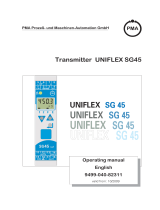 West Control Solutions SG 45 User manual
West Control Solutions SG 45 User manual
-
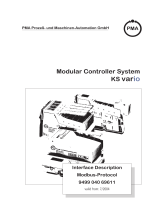 West Control Solutions BK MOD User manual
West Control Solutions BK MOD User manual
-
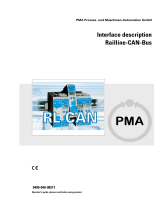 West Control Solutions Rail line CAN User manual
West Control Solutions Rail line CAN User manual
-
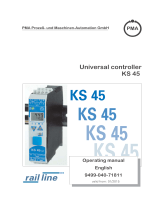 West Control Solutions KS 45 User manual
West Control Solutions KS 45 User manual
-
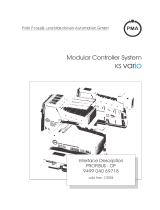 West Control Solutions BK DP/V1 User manual
West Control Solutions BK DP/V1 User manual
-
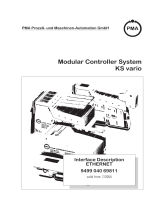 West Control Solutions BK ETH User manual
West Control Solutions BK ETH User manual
-
 West Control Solutions KS 45 User manual
West Control Solutions KS 45 User manual
-
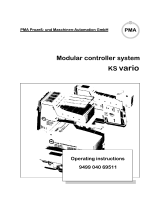 West Control Solutions KS Vario User manual
West Control Solutions KS Vario User manual
-
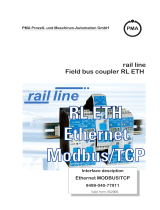 West Control Solutions Rail line MODTCP User manual
West Control Solutions Rail line MODTCP User manual
-
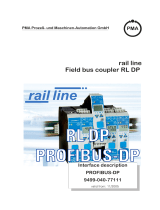 West Control Solutions RL DP User manual
West Control Solutions RL DP User manual
Other documents
-
Chromalox 6060 Operating instructions
-
VIPA System 300S User manual
-
ABB NMBA-01 Installation And Startup Manual
-
ABB RS485 Modbus adapter Installation And Startup Manual
-
Eurotherm EPower Controller Owner's manual
-
Gantner IDL 101 User manual
-
WEG SSW05/SSW07/SSW08 User manual
-
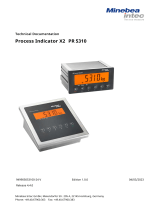 Minebea Intec X2-PR 5310 Owner's manual
Minebea Intec X2-PR 5310 Owner's manual
-
Eaton SWIRE-GW-MB User manual
-
Automation Direct CFW100 Modbus RTU User manual












































































































































































































